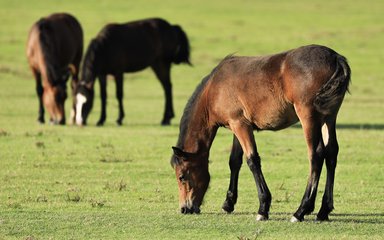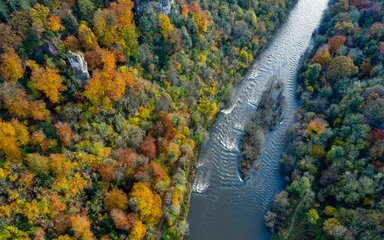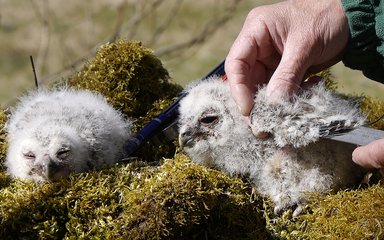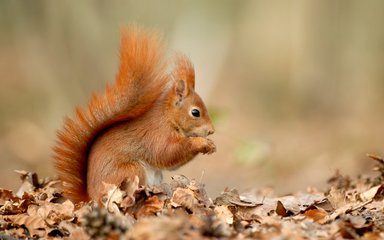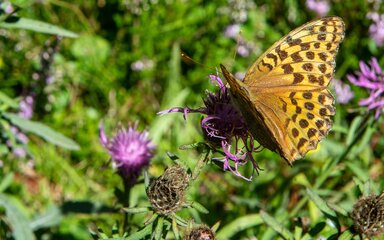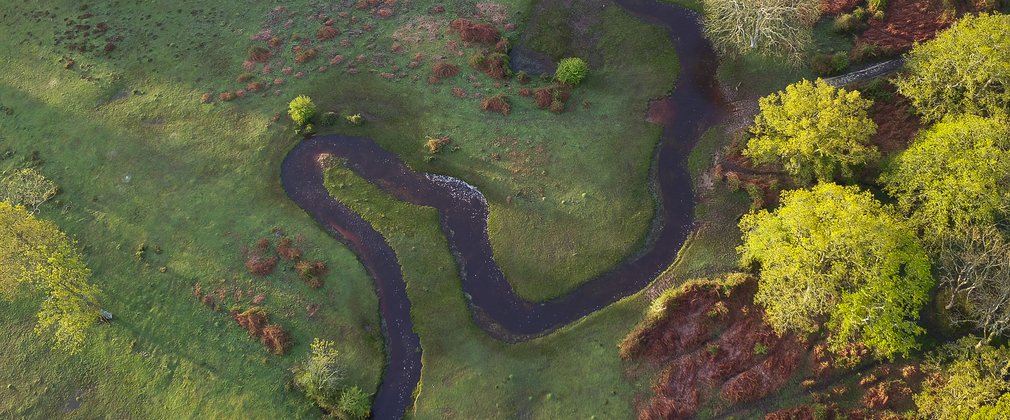
The New Forest is one of Europe’s most important locations for nature and conservation.
Its unique mix of landscapes including ancient woodlands, wetlands and bogs, and open heathlands means it is home to many rare species of plants and wildlife long since lost from the UK and Europe.
The significance of the New Forest is reflected in the fact that it has the highest possible conservation status and is legally protected.
It is a Special Site of Scientific Interest (SSSI), a Special Protection Area (SPA) for Birds, a Special Area of Conservation (SAC), and a Ramsar site (land listed as a Wetland of International Importance). These protections mean that all organisations looking after the Forest have important conservation obligations and there are strict legal limits on the amount and types of activities and events that can take place here.
Precious landscapes
The New Forest is home to more than 1,000 ponds and has over a dozen individual rivers, streams and their tributaries flowing through it on their way out to the Solent, Southampton Water and River Avon.
It also has an extensive network of wetlands and bogs that hold and store water. These boggy areas, or mires as they are known, are some of the last left in Europe. In fact, 75% of areas like this left in North West Europe are here in the New Forest.
The incredible plants and animals that live at the heart of the New Forest are all dependent on these different sources of fresh, clean water for food, shelter and as places to breed. These waterways also play a fundamental role in addressing climate change by storing carbon and preventing flooding for communities further downstream.

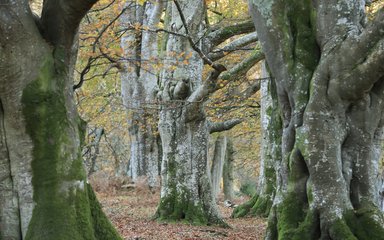
Ancient trees and historic monuments
The New Forest has some of the oldest trees in the country. With around 1,000 ancient trees recorded here, the area is believed to have the highest concentrations of these in Western Europe. The oldest trees are Yews (Taxus baccata) with some thought to be over 1,000 years old. Oaks (Quercus robur) are the next in line, living for up to an impressive 800 years old. Beech (Fagus sylvatica) trees can also reach a grand old age of around 300 to 400 years.
The area is scattered with other signs of its long and rich history. Across the Forest there are 175 different scheduled monuments, those recognised as of national importance, protected and cared for by Forestry England. These include around 200 Bronze Age burial mounds and barrows, Iron Age Hill Forts, Roman Roads and Medieval Hunting Lodges plus airfields and operational bases used in the Second World War.
Plantlife
The New Forest landscape is home to many rare species of plantlife.
- Hampshire purslane (Ludwigia palustris) is an extremely rare aquatic plant only found in the New Forest. Its leaves are reddish purple and green, and habitats include shallow pools and streams.
- Small fleabane (Pulicaria vulgaris) is a very rare flowering plant and one of Britain’s most endangered plant species. It is small with bright yellow flower heads and hairy, multi-branched, reddish-brown stems. It is unable to compete with other plants and so favours grazed short grasslands. The New Forest is one of its last strongholds.
- Coral necklace (Illecebrum verticillatum) is a rare flowering plant with long trailing red stems and clusters of white flowers resembling beads threaded along a necklace. With the widespread loss of heathlands across the UK it is now only found in a few areas including here in the New Forest.
- Pillwort (Pilularia globulifera) is a small creeping fern with grass-like leaves with tiny round spore cases or ‘pills’ at its base. In decline across Western Europe and lost from nearly half of its known locations in the UK, it is widespread in the New Forest making it one of the most important populations in Europe.
- Marsh clubmoss (Lycopodiella inundata) is an endangered plant that has already been lost from much of Europe with the UK now holding a large part of the global population. Its long spikey stems are a distinctive bright, lime green in colour and grow up to 20cms long.
- The New Forest is home to over 2,500 types of fungi, including many rare and endangered species.

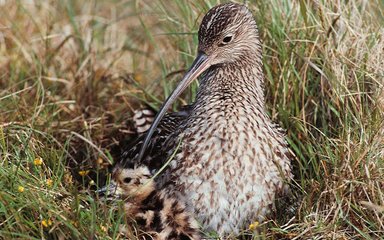
Wildlife
The New Forest’s mix of habitats makes it a haven for wildlife with many species long since disappeared from many other parts of the UK still thriving here.
The network of ponds and waterways in the New Forest are ideal habitats for wildlife. An incredible 75% of all species of dragonflies and damselflies are found here including the extremely rare Southern damselfly (Coenagrion mercuriale), Great crested newts (Triturus cristatus) - a protected and priority species across Europe, and the mighty Medicinal leech (Hirudo medicinalis).
The New Forest is home to all six UK native reptiles; Sand lizards (Lacerta agilis), Adders (Vipera berus), Slow worms (Anguis fragilis), Grass snakes (Natrix helvetica), Common lizards (Zootoca vivipara) and Smooth snakes (Coronella austriaca). Smooth snakes are an incredibly rare, shy, and secretive species and can only be found at a few sites in the UK. The sandy heathland habitat of the New Forest, which it shares with the rare sand lizard, is a stronghold for this species.
The New Forest is a Special Protection Area for Birds, and one of the last places in the UK where rare and endangered species including the Nightjar (Caprimulgus europaeus), Woodlark (Lullula arborea), Dartford Warbler (Sylvia undata), and the Curlew (Numenius arquata) – now globally threatened with extinction, come in significant numbers to breed.
Deer have been living in the New Forest since the era of William the Conqueror when the forest was a Royal hunting ground. Today four species of deer live here side by side, Fallow deer (Dama dama), Roe deer (Capreolus capreolus), Sika deer (Cervus nippon) and the mighty Red deer (Cervus elaphus). You might see an occasional Muntjac deer (Muntiacus reevesi), an escapee from private estates. Red and Roe are the only species native to Britain and the Red is the UK’s largest mammal.
Livestock and Commoning
The New Forest is home to some other famous animals, such as the iconic New Forest Pony, which has been part of the traditional forest scene for more than a thousand years, as well as donkeys, cows, pigs, and sheep who all belong to people who live locally and care for them. Their owners are New Forest commoners, who practice the ancient right to graze their livestock on the open forest.
Each pony is marked with the owner’s brand and each cow or sheep carries identification tags in its ears. Donkeys have a brand or an ear button. The local agister is familiar with the animals in their area and can often identify most of them individually, too.
The animals roam free, going anywhere they like, choosing the tastiest grasses and vegetation to keep themselves healthy. Many rare and precious plants and creatures thrive here specifically because of the way the area is grazed by the commoners’ animals. Their grazing keeps the grass short, and they have created a ‘browse line’ at about head height.
They need their space and should not be fed or petted by visitors. It’s vitally important that they are left to forage for themselves.
